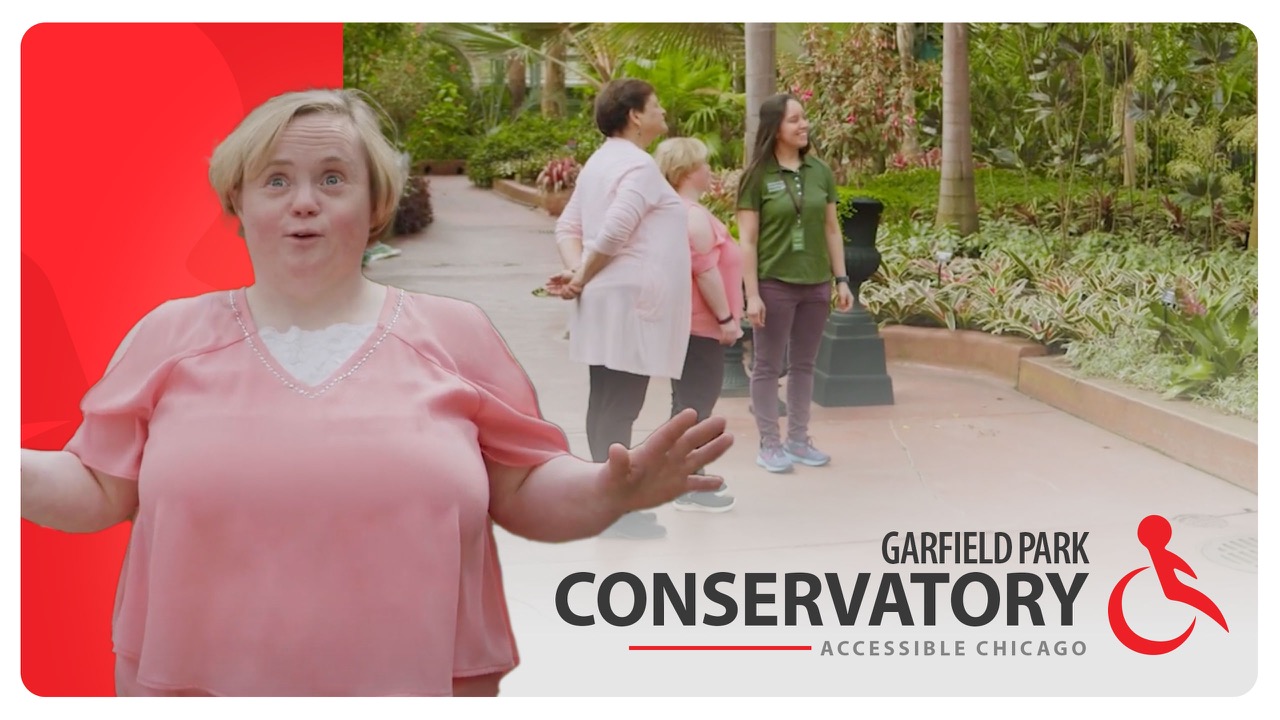
Join us on a captivating journey through the Garfield Park Conservatory, where botanical wonders await at every turn. Explore the enchanting desert landscapes and immerse yourself in the vibrant colors of tropical blooms. Experience the soothing sounds of cascading waterfalls and marvel at the graceful movements of the koi fish. Learn about our commitment to accessibility and inclusivity as we highlight sensory tours and initiatives designed for all visitors.
Click to View ASL Transcript
MATTIE: Garfield Park Conservatory is basically a really large plant greenhouse, and so we have two acres of gardens under glass and 10 acres outside, so it’s a place for Chicagoans to go and people visiting the city to see plants from around the world. There are different ecosystems that you can check out and different climates. Accommodating people with disabilities is very important to the Conservatory. Making sure we have accessible tools and the things that we need to make sure that everyone feels like they’re welcome, that they have a space here and that they’re invited.
NANCY: Oh, wow.
BRIDGET: Mom, look at the waterfall. That’s really pretty.
NANCY: Oh, wonderful.
BRIDGET: I love waterfalls. You open the doors and you come into the Conservatory, you are going to die for. The desert’s pretty cool. It’s dry and warm, and then when you go into other different areas, just find different colors of different plants. Those fish are really big.
NANCY: I love that. Oh my gosh.
BRIDGET: They are really pretty.
NANCY: That koi fish.
BRIDGET: Yeah. And then the fish has different kinds of colors. They have orange and bright orange. There’s white and black. They’re different types of colors of fish and Chihuly flowers with these waterfalls. That’s really pretty.
MATTIE: I loved walking around with Bridget to see the things that she was really excited and pointing out, engaging with the different plants.
BRIDGET: That’s really cool with how you kind of have the vibrant color pink.
MATTIE: When we, a few years ago, did an assessment to see where we were with accessibility, we realized that there were some areas where we could improve. As we developed new programming, we were trying to make sure that we’re keeping people with disabilities at the forefront of that so that everything is designed with that in mind. For instance, we won’t have a program directly in the fern room because it’s not as physically accessible as other spaces. For groups who want to explore the Conservatory that might have low vision or other sensory processing issues, we can set up a sensory tour, and that’s a free of charge experience for people. So it’s usually a small group. We’ll go around and highlight different sensory plants throughout the collection. And so thinking of the five senses, there are a lot of plants that we can highlight as far as smell and touch. It’s a very welcoming space. We do have staff that are out on the floor that are there to answer questions. If you’re looking for an experience where it might be a little quieter, I’d recommend coming during the week when we have less visitors here. The weekends can be pretty busy.
BRIDGET: These are really pretty right there, with the pink. I would definitely come back and visit again, maybe with my niece and nephews. The doors were open and they allow me to come in and just exhibit the area, and that’s really cool to see that there is something like this. It’s pretty amazing.
MATTIE: Nature is so healing in so many ways that just being in this space smelling, reflecting in the space, making sure that that’s available to everybody is really important to us.

Recent Comments